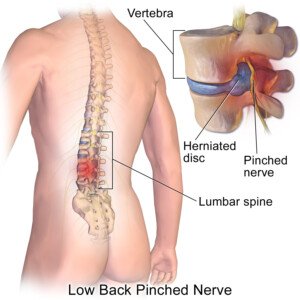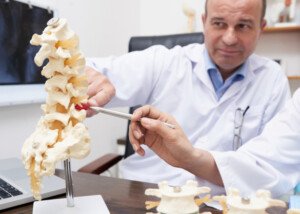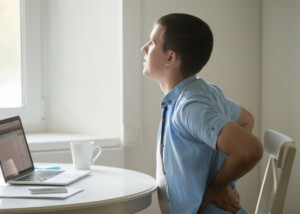
How can a patient do physical therapy for a herniated disc if it hurts too much to exercise?
What if you have a herniated disc and find that the physical therapy exercises are impossible to do because you can’t get into the position without a lot of pain?
Some patients have this experience, yet surgery for the herniated disc is clearly out of the question — either because they are afraid of “going under the knife,” or because they have an unrelated medical condition that makes surgery risky.
Should you just grin and bear it? After all, a person who has never had an exercise regimen will find the pain of physical therapy more unbearable than will someone who is quite used to rigorous workout sessions or physical activity.
One thing that will invariably cross the patient’s mind is if the pain during physical therapy means that the movements are actually making the bulging disc worse.
Can physical therapy worsen a bulging disc?
“Physical therapy is employed to diminish pain and suffering,” says Kenneth K. Hansraj, MD, who specializes in minimally invasive spine surgery, laminectomies and spinal fusions, and is author of the book, “Keys to an Amazing Life: Secrets of the Cervical Spine.”
Dr. Hansraj continues, “Unfortunately, especially in the phases of pain, just touching the involved spinal area may lead to further pain and tenderness.
“I encourage my clients to stay with the therapy at this point, since the therapy will lead to diminished inflammation and restoration of function along with further tolerance of therapy.”
In other words, grin and bear it. Because if you do nothing for a disc herniation, it will likely never get better, and it certainly won’t magically go away.
Risk Factors for a Bulging or Herniated Disc
Several factors can increase the risk of developing a herniated disc.
Age is a primary risk factor, as the discs in the spine naturally degenerate and become more prone to herniation over time.
Physical activity also plays a role; individuals who engage in heavy lifting, repetitive bending, or strenuous activities are at higher risk, especially if they execute poor form.
Obesity adds extra pressure on the spine, increasing the likelihood of disc problems.
Poor posture and prolonged sitting can stress the spine and contribute to disc herniation.
Smoking is another risk factor, as it reduces blood flow to the spinal discs, impairing their health and resilience.
Additionally, genetics can contribute, as some people inherit a predisposition to disc issues.
Physical therapy is one of the best non-surgical treatments for the so-called bulging disc.
Do not give up on physical therapy, even if it causes some pain.
 Dr. Hansraj is an orthopedic surgeon in Poughkeepsie, NY, and is affiliated with St. Francis Hospital-Roslyn. He received his medical degree from Drexel University College of Medicine and has been in practice for 20+ years.
Dr. Hansraj is an orthopedic surgeon in Poughkeepsie, NY, and is affiliated with St. Francis Hospital-Roslyn. He received his medical degree from Drexel University College of Medicine and has been in practice for 20+ years.
 Lorra Garrick has been covering medical, fitness and cybersecurity topics for many years, having written thousands of articles for print magazines and websites, including as a ghostwriter. She’s also a former ACE-certified personal trainer.
Lorra Garrick has been covering medical, fitness and cybersecurity topics for many years, having written thousands of articles for print magazines and websites, including as a ghostwriter. She’s also a former ACE-certified personal trainer.
.









































